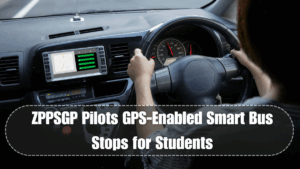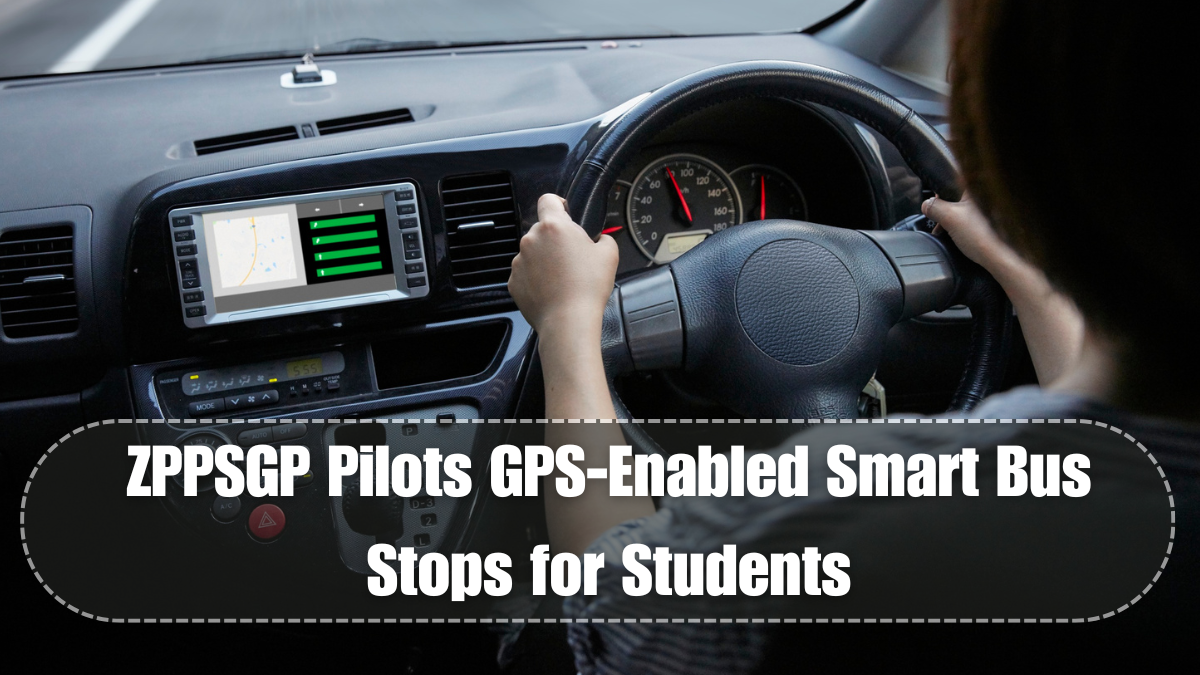In a groundbreaking move to improve student safety and modernize rural education infrastructure, Zilla Parishad Primary Schools under the ZPPSGP program have officially begun the rollout of smart bus stops for schools across select regions in Maharashtra. This initiative marks a major advancement in the use of safety tech for children’s transportation in government-run schools.
The new smart school bus system is designed to track and manage student pick-up and drop-off points with real-time data. Each stop will be equipped with GPS bus stop units, LED display boards, solar-powered lights, and CCTV cameras. This upgrade ensures better monitoring, reduced wait times, and timely alerts to both parents and school authorities.
Launched in July 2025, the pilot phase will cover 15 bus routes across tribal and semi-urban regions under the ZPPSGP educational network. The initiative is being celebrated as a model for blending public education with technology, especially in areas where school bus infrastructure was previously underdeveloped or informal.

Features of the smart bus stop system
The newly introduced smart bus stops for schools aren’t just ordinary shelters—they’re equipped with multiple layers of hardware and software to ensure student safety and operational efficiency.
Key features include:
-
GPS-enabled vehicle tracking that syncs with school administration and parent mobile apps
-
LED countdown timers to display expected arrival times of school buses
-
CCTV surveillance to monitor student activity and ensure safety while waiting
-
Solar-powered lighting for visibility during early mornings or evening pick-ups
-
Digital attendance system integrated with RFID tags on student ID cards
All this tech is tied together by a cloud-based backend monitored from the ZPPSGP Education Control Room. With these features in place, delays, unauthorized detours, or sudden route changes can be addressed in real time.
Why GPS bus stop tech matters for student safety
For years, students in rural areas have relied on loosely coordinated transport with little predictability or protection. The introduction of GPS bus stop tech in 2025 is a major leap forward in ensuring that children reach school and home safely every day.
Here’s how the new system solves long-standing challenges:
| Problem | Solution with Smart Bus Stops |
|---|---|
| Delays or missed buses | GPS lets students and parents track buses live |
| Unsafe or remote waiting locations | LED-lit shelters provide safety and visibility |
| Parents unsure of arrival times | LED boards and app alerts provide updates |
| No oversight of transport deviations | Real-time tracking flags unauthorized stops |
| Absenteeism due to missed transport | Improved predictability increases attendance |
The entire project reinforces that smart bus stops for schools are no longer a futuristic luxury but an essential tool in modern public education logistics.
ZPPSGP’s approach to implementation
The ZPPSGP initiative is being implemented in close coordination with Maharashtra’s Department of School Education and local Gram Panchayats. The pilot began with a survey of existing bus routes, followed by infrastructure mapping and installation of smart school bus hardware.
Each smart stop is built with eco-friendly materials, uses solar power for lighting, and is designed to be weather-resistant. The project also includes:
-
Training sessions for bus drivers on using GPS systems
-
Orientation workshops for parents to install the student transport app
-
Monitoring support via a centralized dashboard in ZPPSGP’s HQ
-
Emergency protocol training for teachers and transport monitors
This level of thoroughness ensures that the technology is not only deployed but also adopted and maintained effectively.
Student, teacher, and parent reactions
Initial responses from the schools involved in the pilot have been overwhelmingly positive. Teachers report reduced late arrivals and fewer absences due to missed buses. Parents, especially working mothers, have praised the peace of mind offered by live tracking and SMS alerts.
Here are some early reactions from the field:
-
Suman Gaikwad, a parent in Satara: “Now I know exactly when my child is on the way. I no longer wait in uncertainty or fear.”
-
Ravi Kendre, a ZPPSGP teacher: “This has made morning assemblies more punctual. Students are arriving on time, and we’re less stressed about delays.”
-
Ramesh Shinde, school bus driver: “The GPS device is easy to use. I also get help if there is a route change or traffic jam.”
The introduction of safety tech at the village school level is helping build a stronger culture of reliability, punctuality, and safety—all critical to student development.
FAQs
What are smart bus stops for schools?
They are GPS-enabled, LED-equipped shelters that track school buses and provide real-time updates and security features for student transportation.
Which schools are part of the ZPPSGP pilot?
The pilot covers Zilla Parishad Primary Schools across select tribal and semi-urban areas in Maharashtra, starting July 2025.
How does the GPS bus stop system help students?
It provides live bus tracking, estimated arrival time displays, CCTV security, and solar lighting to keep students safe and informed.
Can parents track the school bus?
Yes, parents receive real-time updates through a dedicated mobile app synced with the school’s GPS system.
Will this system expand to other schools?
Yes, if the pilot succeeds, the Maharashtra education department aims to roll out the system to all ZP-run schools across the state.
Conclusion
With the rollout of smart bus stops for schools, ZPPSGP is not only transforming student transportation but also redefining what safety and efficiency mean for rural education. The combination of smart school bus features like GPS, solar lighting, and digital alerts is bridging the gap between urban and rural infrastructure. As this model scales in the coming months, Maharashtra sets a compelling example of how technology and education can come together to prioritize the safety and well-being of students—even in the most remote parts of the state.
Click here to know more.
